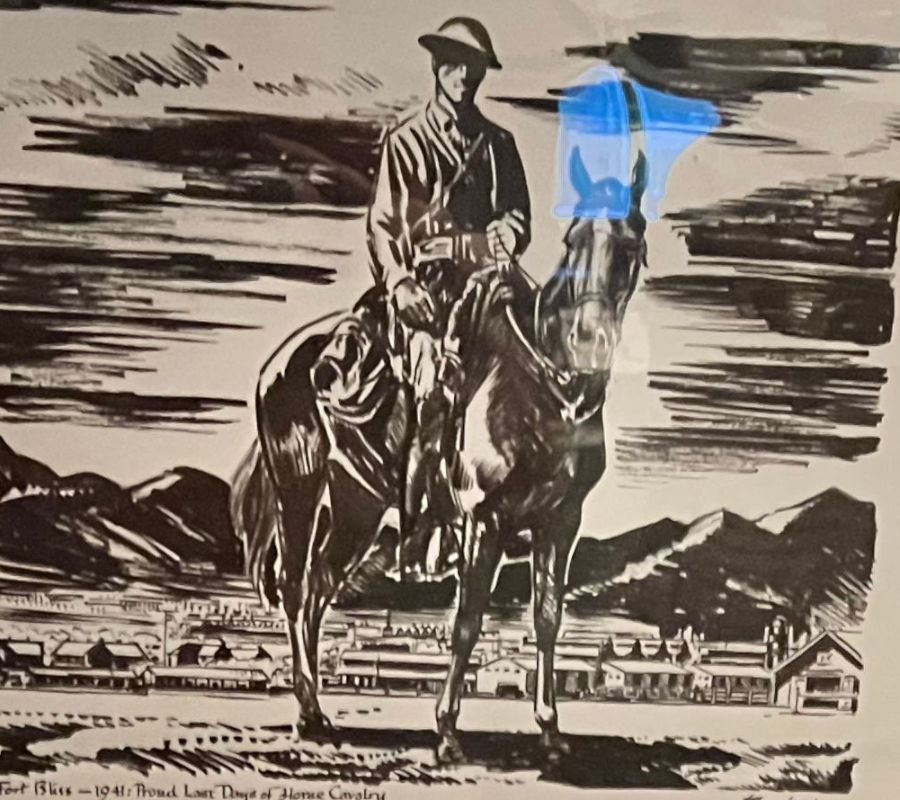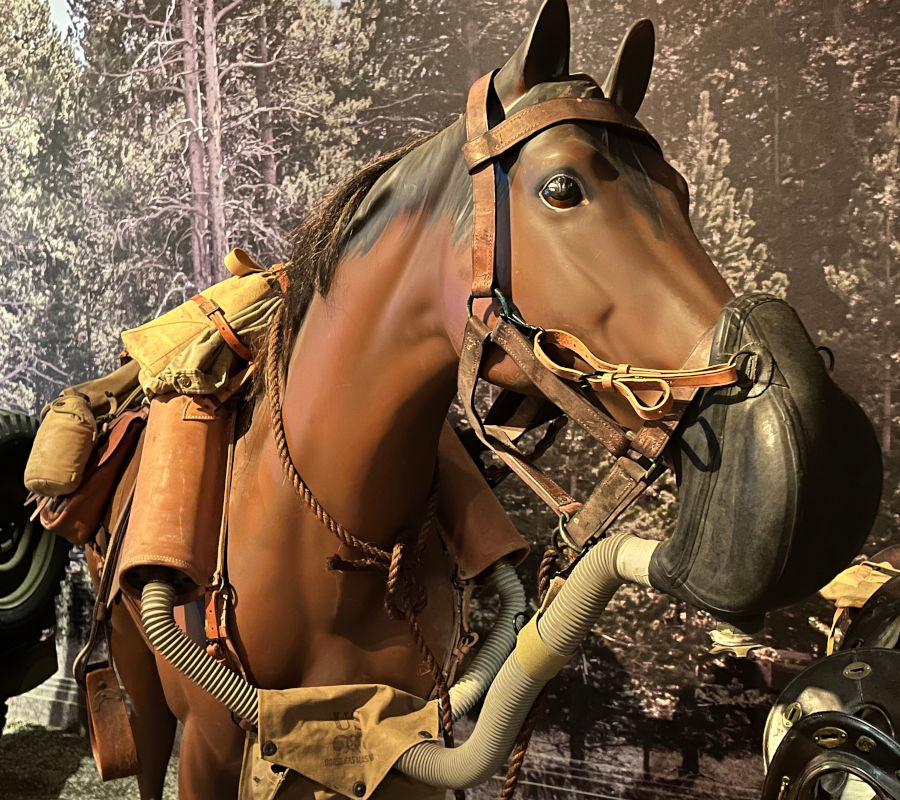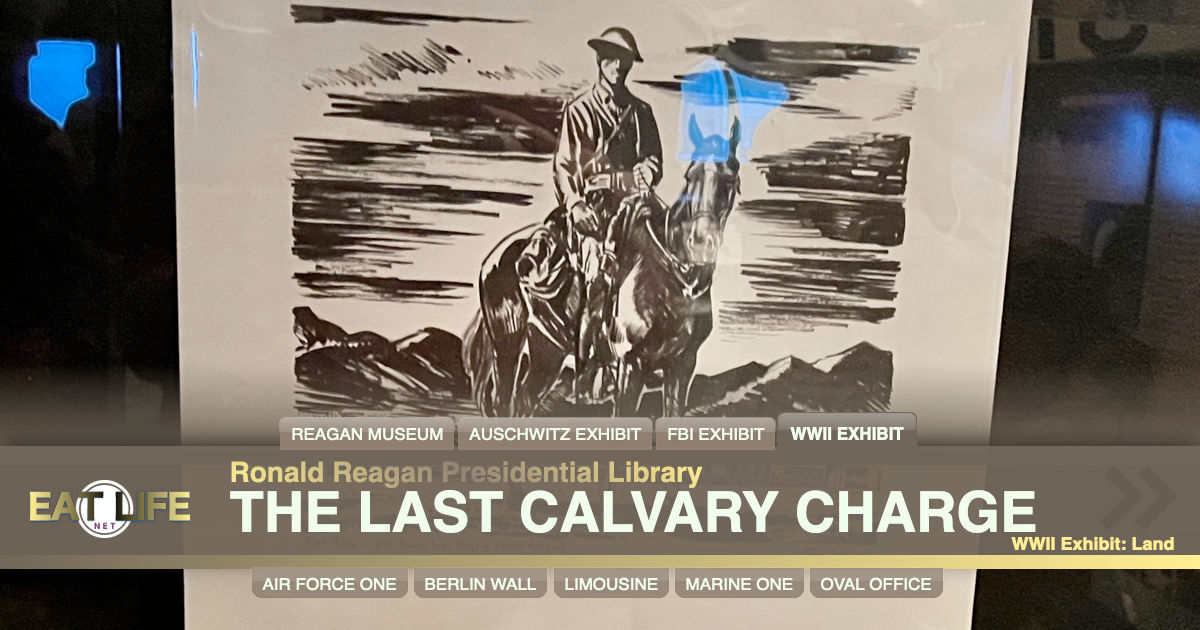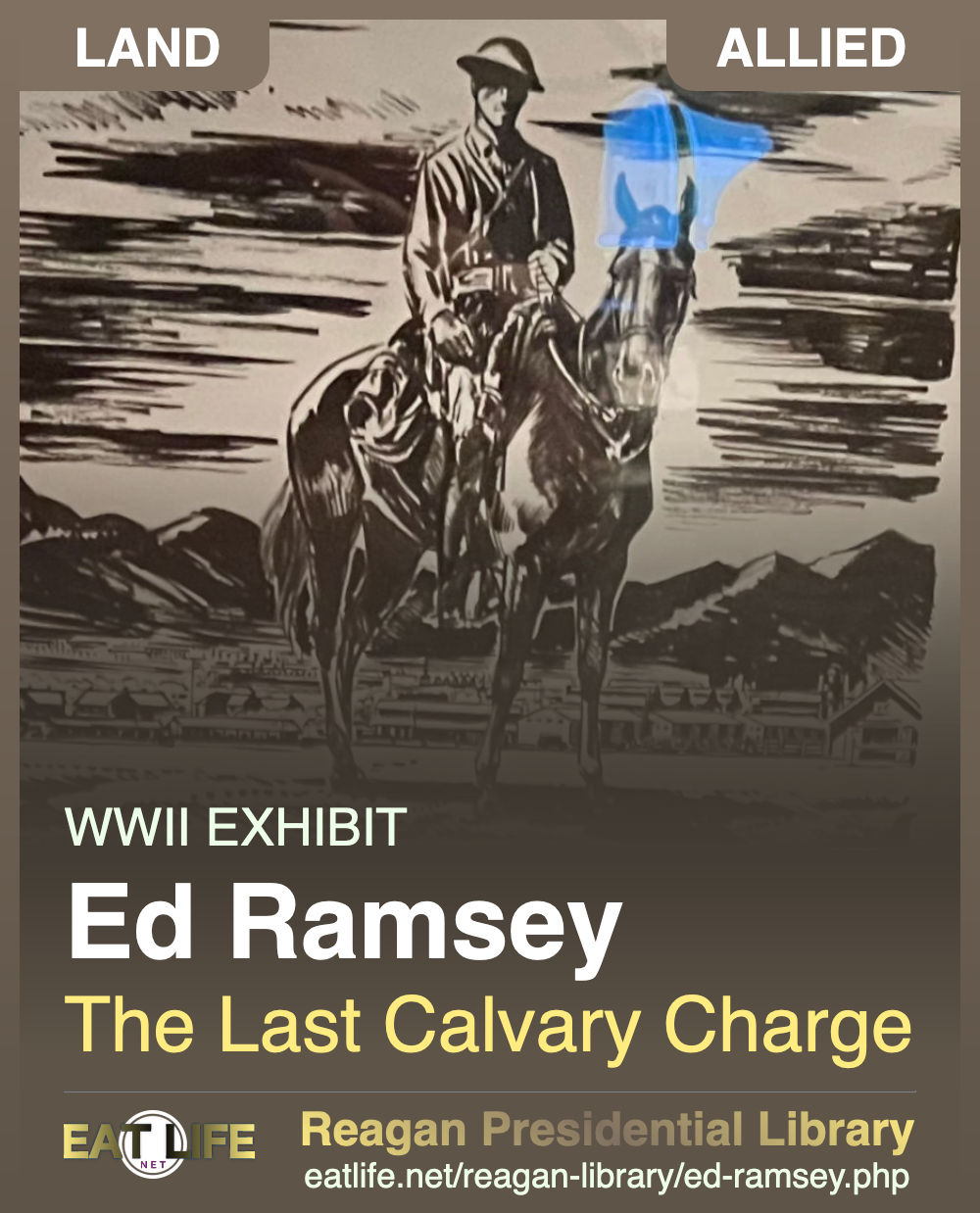Lt Edwin P. Ramsey was in command of a 27-man, mostly Filipino, G Troop when they encountered the enemy in the village of Morong on the Philippines' Bataan peninsula on January 16, 1942. Despite being heavily outnumbered by an infantry force supported by tanks, Ramsey ordered a cavalry charge. The surprised Japanese broke and fled. Ramsey and his men held their position for five hours under heavy fire, until reinforcements could be brought up.
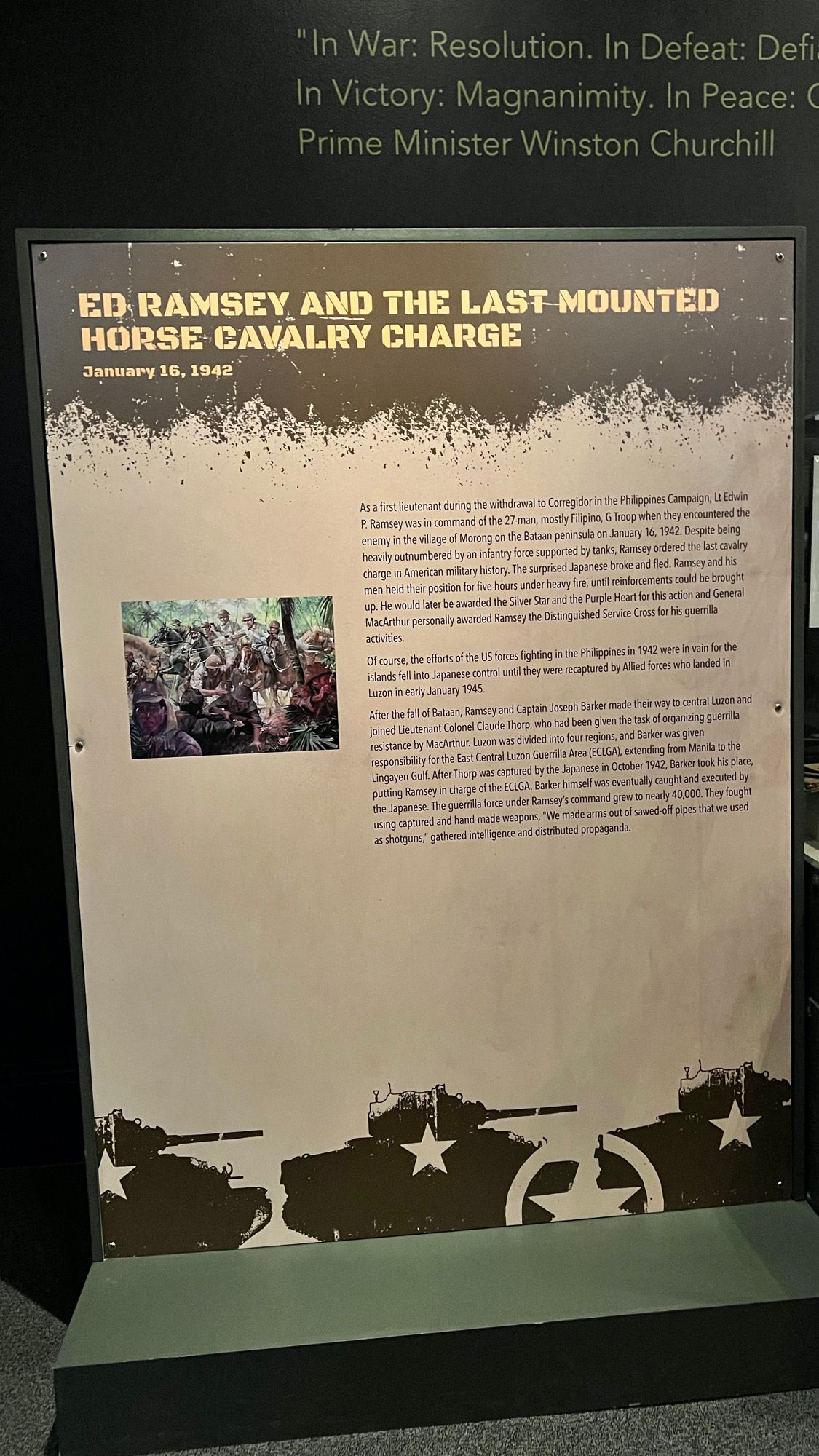
1941
As a first lieutenant during the withdrawal to Corregidor in the Philippines Campaign, Lt Edwin P. Ramsey was in command of the 27-man, mostly Filipino, G Troop when they encountered the enemy in the village of Morong on the Bataan peninsula on January 16, 1942. Despite being heavily outnumbered by an infantry force supported by tanks, Ramsey ordered the last cavalry charge in American military history.
The surprised Japanese broke and fled. Ramsey and his men held their position for five hours under heavy fire, until reinforcements could be brought up. He would later be awarded the Silver Star and the Purple Heart for this action and General MacArthur personally awarded Ramsey the Distinguished Service Cross for his guerrilla activities.
PHILIPPINES1942
Of course, the efforts of the US forces fighting in the Philippines in 1942 were in vain for the islands fell into Japanese control until they were recaptured by Allied forces who landed in Luzon in early January 1945.
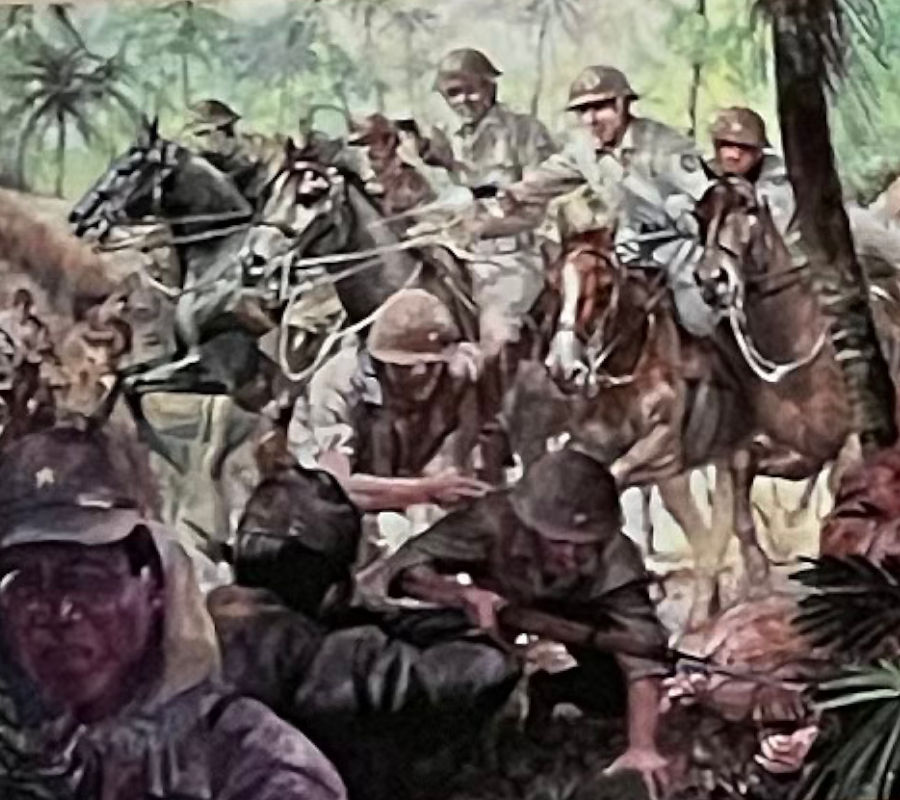 After the fall of Bataan, Ramsey and Captain Joseph Barker made their way to central Luzon and joined Lieutenant Colonel Claude Thorp, who had been given the task of organizing guerrilla resistance by MacArthur.
Luzon was divided into four regions, and Barker was given responsibility for the East Central Luzon Guerrilla Area (ECLGA), extending from Manila to the Lingayen Gulf.
After Thorp was captured by the Japanese in October 1942, Barker took his place, putting Ramsey in charge of the ECLGA.
Barker himself was eventually caught and executed by the Japanese.
The guerrilla force under Ramsey's command grew to nearly 40,000.
They fought using captured and hand-made weapons, "We made arms out of sawed off pipes that we used as shotguns," gathered intelligence and distributed propaganda.
After the fall of Bataan, Ramsey and Captain Joseph Barker made their way to central Luzon and joined Lieutenant Colonel Claude Thorp, who had been given the task of organizing guerrilla resistance by MacArthur.
Luzon was divided into four regions, and Barker was given responsibility for the East Central Luzon Guerrilla Area (ECLGA), extending from Manila to the Lingayen Gulf.
After Thorp was captured by the Japanese in October 1942, Barker took his place, putting Ramsey in charge of the ECLGA.
Barker himself was eventually caught and executed by the Japanese.
The guerrilla force under Ramsey's command grew to nearly 40,000.
They fought using captured and hand-made weapons, "We made arms out of sawed off pipes that we used as shotguns," gathered intelligence and distributed propaganda.
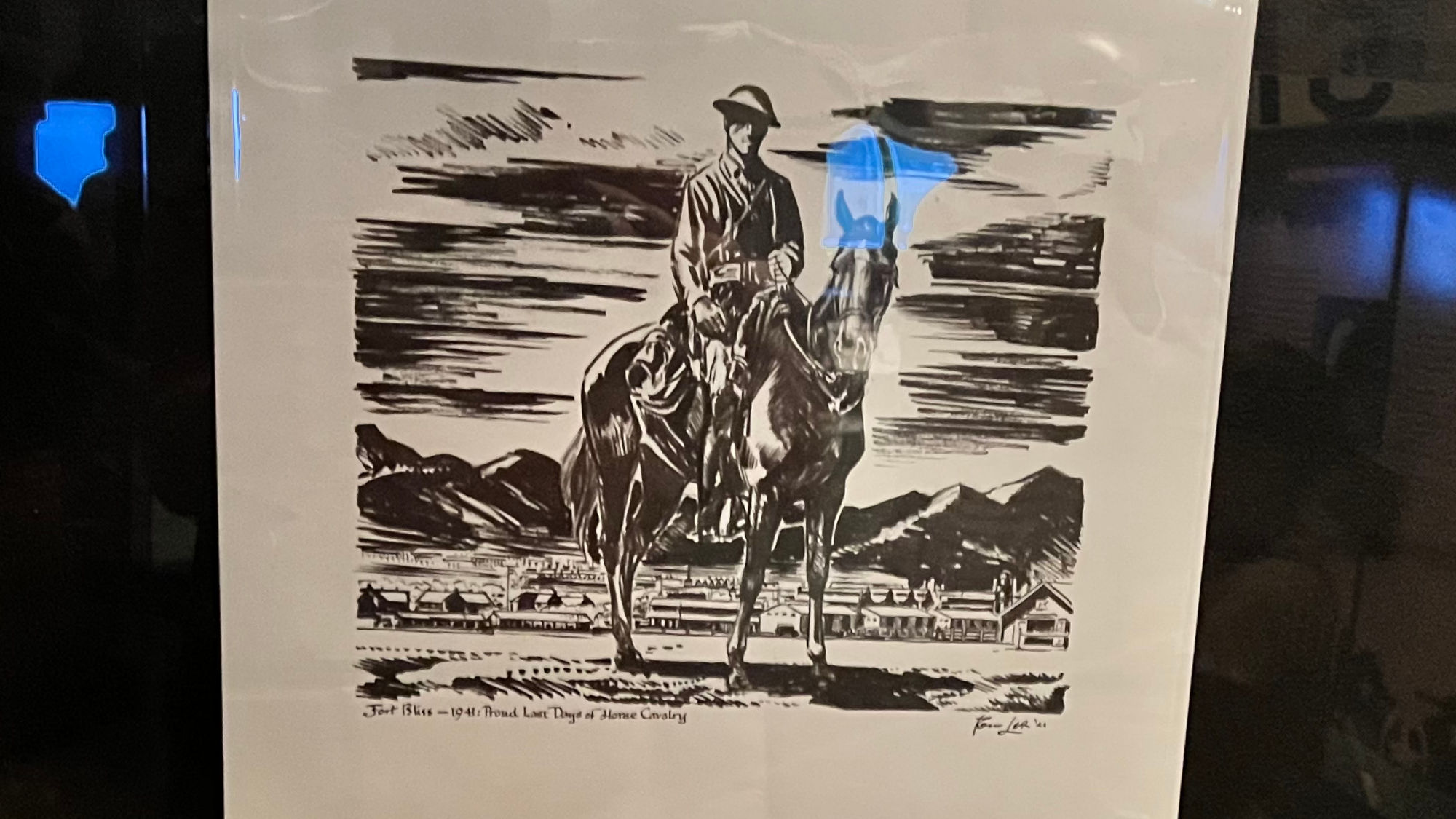
1941
By Tom Lea, 1983
The last cavalry charge by the US Army took place in January 1942 in the Philippines. Members of the 26th Cavalry (the Philippine Scouts), a unit of American officers and Filipino en listed, charged Japanese infantry crossing the Batalan River. Mounted cavalry would later be replaced with tanks, but there are still roles for horses within the armed forces.
WIKIPEDIALieutenant Colonel Edwin Price Ramsey
May 9, 1917 – March 7, 2013
was a United States Army officer and guerrilla leader during the World War II Japanese occupation of the Philippines. Early in the war, he led the last American cavalry charge in military history.In February 1941, Second Lieutenant Ramsey was assigned to the 11th Cavalry Regiment at Campo, California. When volunteers were requested for the 26th Cavalry Regiment (Philippine Scouts) in the Philippines, he jumped at the opportunity. Ramsey recalled later that "... I didn't even know where it was, except that it was a warm country, it was tropical and they had a good polo team there." He had been on the Oklahoma Military Academy polo team and played on the losing side of a polo match in the Philippines the day before Japan attacked Pearl Harbor; the umpire was Major General Jonathan M. Wainwright (who would assume command of the South West Pacific Area after General Douglas MacArthur was evacuated to Australia).
As a first lieutenant during the withdrawal to Corregidor in the Philippines Campaign, he was in command of the 27-man, mostly Filipino G Troop when they encountered the enemy in the village of Morong on the Bataan peninsula on January 16, 1942. Despite being heavily outnumbered by an infantry force supported by tanks, Ramsey ordered the last cavalry charge in American military history. The surprised Japanese broke and fled. Ramsey and his men held their position for five hours under heavy fire, until reinforcements could be brought up. He would later be awarded the Silver Star and the Purple Heart for this action.
After the fall of Bataan, Ramsey and Captain Joseph Barker made their way to central Luzon and joined Lieutenant Colonel Claude Thorp, who had been given the task of organizing guerrilla resistance by MacArthur. Luzon was divided into four regions, and Barker was given responsibility for the East Central Luzon Guerrilla Area (ECLGA), extending from Manila to Lingayen Gulf. After Thorp was captured by the Japanese in October 1942, Barker took his place, putting Ramsey in charge of the ECLGA. Barker himself was eventually caught and executed by the Japanese. The guerrilla force under Ramsey's command grew to nearly 40,000. They fought using captured and hand-made weapons ("We made arms out of sawed-off pipes that we used as shotguns."), gathered intelligence and distributed propaganda.
Allied forces landed in Luzon in early January 1945. On June 13, General MacArthur personally awarded Ramsey the Distinguished Service Cross for his guerrilla activities. Ramsey, already a major by 1943, was promoted to lieutenant colonel shortly before being ordered back to the United States. The ordeal in the Philippines had taken its toll – he had lost half his weight and was down to only 93 pounds (42 kg) in January 1945 – and he spent nearly a year recovering from malaria, dysentery, and acute malnutrition in the hospital. Lieutenant Colonel Ramsey received a medical discharge in 1946.
